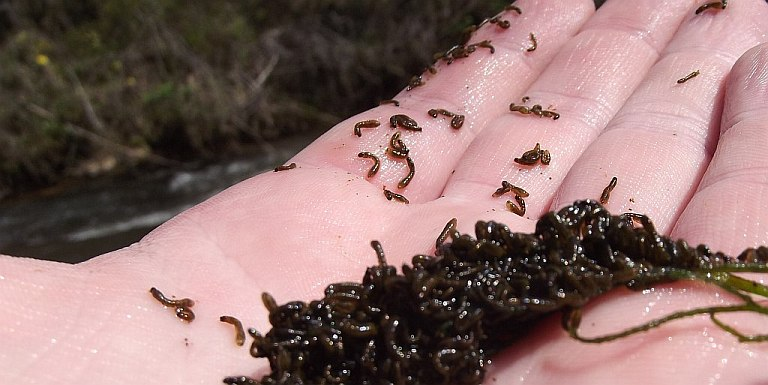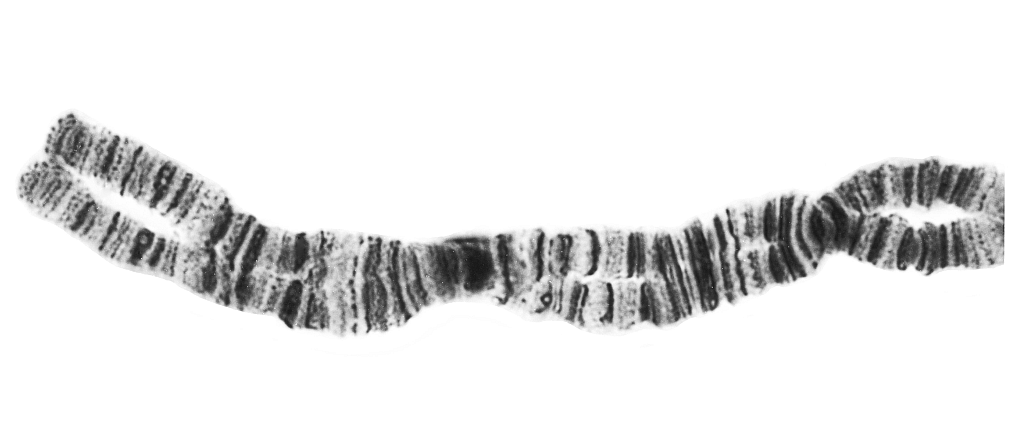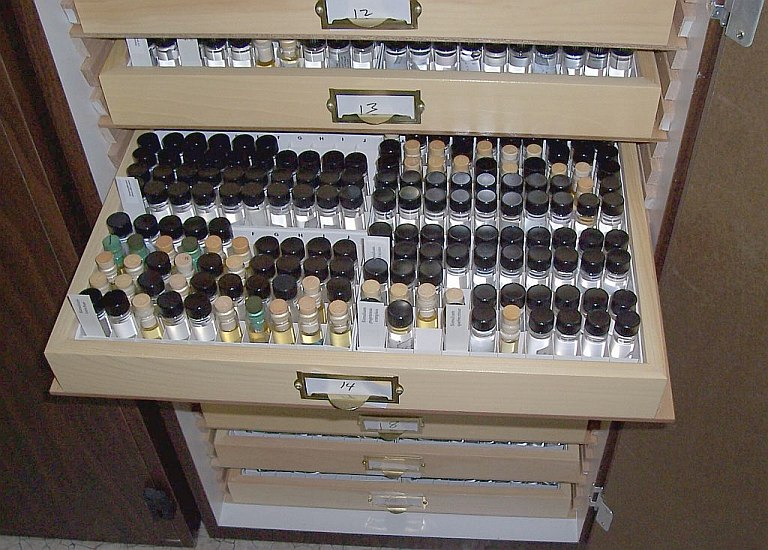Black Flies: Research and General Information
Adult black flies are small insects of the family Simuliidae, about the size of a Drosophila fruit fly. Their arched thorax gives the flies the appearance of a miniature bison, accounting for one of their common names: “buffalo gnat.” Female black flies typically require a blood meal to mature their eggs. The quest for blood drives the pest status of black flies and the transmission of disease agents to humans, domestic animals, and wildlife. The larvae, which hatch from eggs, develop in flowing water, from trickles to great rivers, including those near public activity (e.g., suburbs, golf courses, and parks), where the emerging adults can be a significant nuisance as they swarm about the face and bite.
Black flies also are an important component of a healthy environment. The larvae process
large amounts of organic matter in streams, making this material available to other
organisms. The larvae also serve as food for predators such as game fish and waterfowl. A
sustainable balance between preserving the beneficial role of the larvae in flowing water and
the need to suppress the negative effects of blood feeding and swarming by the female flies
requires knowledge of the behavior, ecology, and genetics of each species. Not all species of
black flies are pests; in fact, most are not. Knowing which black flies should be targeted
for control, therefore, depends on the ability to identify the target species.
Identifying species of black flies is an enormous challenge because many species look
identical to each other, even though their behavior, ecology, genetics, and even pest status
may be very different. We, therefore, use an integrated approach to discover species of black
flies and subsequently identify and characterize them. Black flies have giant, banded
polytene chromosomes. We use these banding patterns, much like a biological bar code, to
discover new species and to understand the structure of their populations. By using the
chromosomes and molecular tools, we then can determine the ecology and distribution of each
species.
Our black fly program is involved in global outreach, research, and teaching. We have provided training in cytogenetics, ecology, and natural-enemy biology to students and Visiting Scholars from Brazil, Taiwan, Thailand, Turkey, and the United States. We currently have research collaborations in place with scientists in Brazil, Canada, Colombia, England, Finland, Germany, Japan, Morocco, and the United States.




Links of interest
General information about black flies at Wikipedia